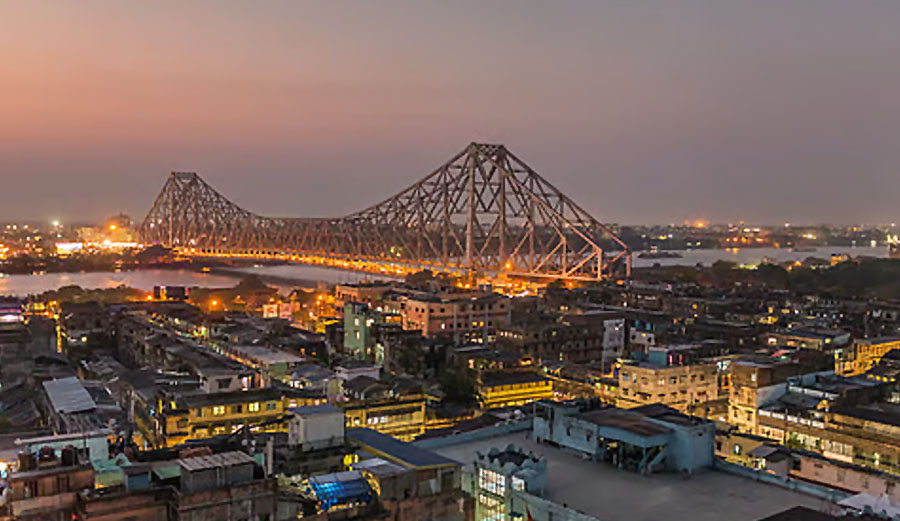Barrackpore was, once upon a time, the oldest cantonment of the British in India.
In fact, Sepoy Mangal Pandey started the uprising known as the First War of Independence in India.
However, after the Mutiny, the British focused on infrastructure development in India.
The British wanted to commute to and from Kolkata in a short time, especially after the Sepoy Mutiny, and so they built B T Road in the year 1775. It was one of the oldest metalled roads in India.
Over the years, B T Road was dotted with various small and medium-sized industries. Areas like Sodepur, Khardah, and Titagarh grew into industrial zones. Factories and godowns were aplenty along the road.
Nevertheless, dramatic deep-rooted changes took place in the area along B T Road and these changes completely transformed the place.
We will recollect some of the changes and see how the present-day B T Road shed its past.
Let’s go.
B T Road Underwent Massive Changes
During the later part of the last century, the landscape of B T Road underwent irreversible changes.
West Bengal was once one of the most industrialised state of India but slowly this prime position was lost. The industrial areas along B T Road were not impervious to the changes.
There are various reasons for this decline and you cannot blame a single factor.
For example, the jute industry faced a paucity of feedstock, industrywide adoption of synthetic fibres, and a lack of modernisation of mills.
There was hardly any way out of the multiple difficulties to keep the mills running.
Prominent jute mills along B T Road also closed and the factories went into disrepair.
These factories had considerable land parcels and these land parcels are being developed for different uses currently.
Unlike in the past, the areas alongside B T Road are no longer dotted with smoke-billowing factories.
In fact, there are just a few factories now.
In the recent past, the B T Road area opened up new opportunities.
What are these opportunities and how B T Road is taking advantage of these opportunities?
We will see in a moment.
Unprecedented Growth of Modern Commerce
Businesses cannot operate in isolation but are subject to overall market conditions.
They must respond to emerging trends fast so that their business model doesn’t become irrelevant.
They must respond to the actions of their competitors and try to be one step ahead of them.
In the recent past, businesses are undergoing massive transformations. The old way of doing business is no longer valid.
The biggest catalyst for this transformation is modern commerce, especially e-commerce.
While industries such as FMCG, cement, pharma, and third-party logistics (3PL) players traditionally led warehousing demand in the region, the recent rise in demand could largely be attributed to the fast-paced growth of the e-commerce segment.
More and more consumers are choosing the convenience of buying products from the comfort of their homes.
The speed of serving customers is of the essence here, and there is huge pressure on companies for fast product delivery.
The backbone of any e-commerce business today is a strong logistic infrastructure as close to the customer as practicable.
A large number of consumer-facing companies are strategising for developing a reliable and responsive logistic set-up.
The areas close to Kolkata with excellent road connectivity are in high demand for the development of logistic infrastructure today.
And B T Road is one of the most preferred locations in this regard.
We will see why, shortly.
The Locational Advantage of B T Road
B T Road is strategically located for developing godown spaces.
It is well connected with the National Highway network once you cross the Ganges and is also easily approachable to the entire northern part of Kolkata and North 24 Parganas.
B T Road is also quite wide, suitable for the movement of large trucks without much difficulty.
If you have a logistic centre at B T Road, you can approach the entire north Kolkata via Shyambazar, and even New Town, Barasat, or Madhyamgram.
There is hardly any other location that is so convenient as B T Road.
In addition to the above advantages, B T Road is lucrative on another front.
What is it?
Let’s examine this in some detail.
Adequate Availability of Suitable Land on B T Road
For the development of a logistic hub, there are certain preconditions.
We have already discussed a couple of these.
Now we will discuss the third secret sauce that makes it all possible.
The vitally important essential part is the availability of adequate land parcels.
Without land, godowns cannot be built.
Moreover, these land parcels must have wide open entry and exit points for large trucks to get in and out.
AS B T Road has a good number of old, unused factories and godowns with wide open approach roads, it is rather easy to build modern logistic centres on them.
This is a distinctive advantage B T Road enjoys.
In short, B T Road is uniquely placed as a location with highway connectivity, proximity to Kolkata and North 24 Parganas, and enough available land parcels.
An estimated 10-15 lakh sq. ft. logistic space is being developed on B T Road.
Digital Empowerment of Logistics
Earlier, the logistics sector was mainly for the distribution of goods. It was a vital sector to cover the length and breadth of India.
However, India is now well covered by a widespread logistic network, especially by the private sector.
This helped to deliver goods to even the remotest towns and villages of our large country.
However, there is hardly any place that is not covered by the logistic network.
The next level of growth will come from a speedier, cheaper, and deeper nationwide logistic system.
In this context, a logistic web with deep reach close to consumers is vital.
This has a salutary effect on businesses.
Their total addressable markets increase by leaps and bounds.
This is further accentuated by digital empowerment. Digital control of logistics, and modern digital commerce by the consumers create a synergistic effect to speed up the company’s responses to market demand.
Logistic infrastructure must be closer to the consumer for these to happen. And then companies can serve consumers several hundred miles away, increasing the total addressable market.
As a gateway to East and North-East India, there is huge scope for the development of a deep neural network of logistic points in West Bengal.






